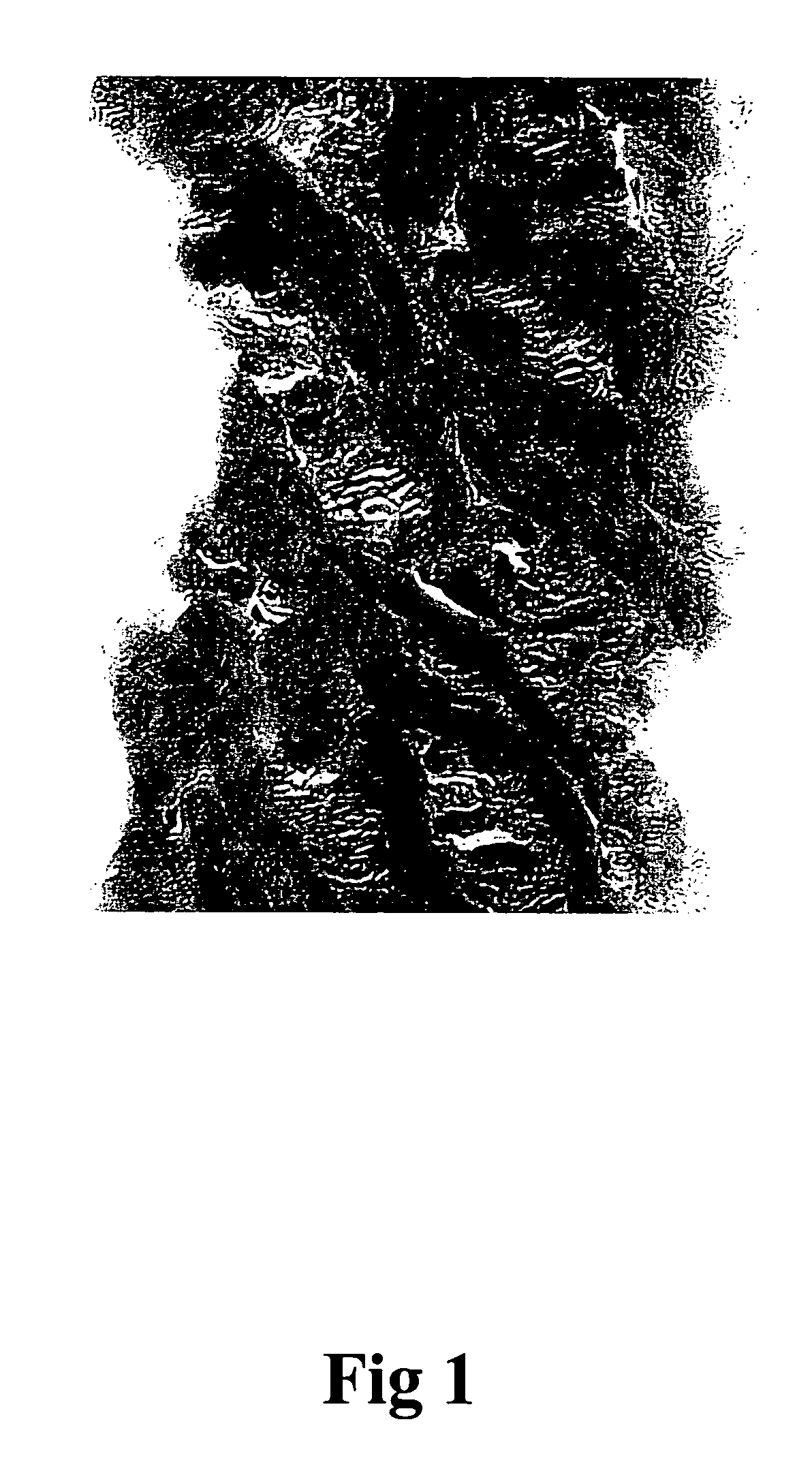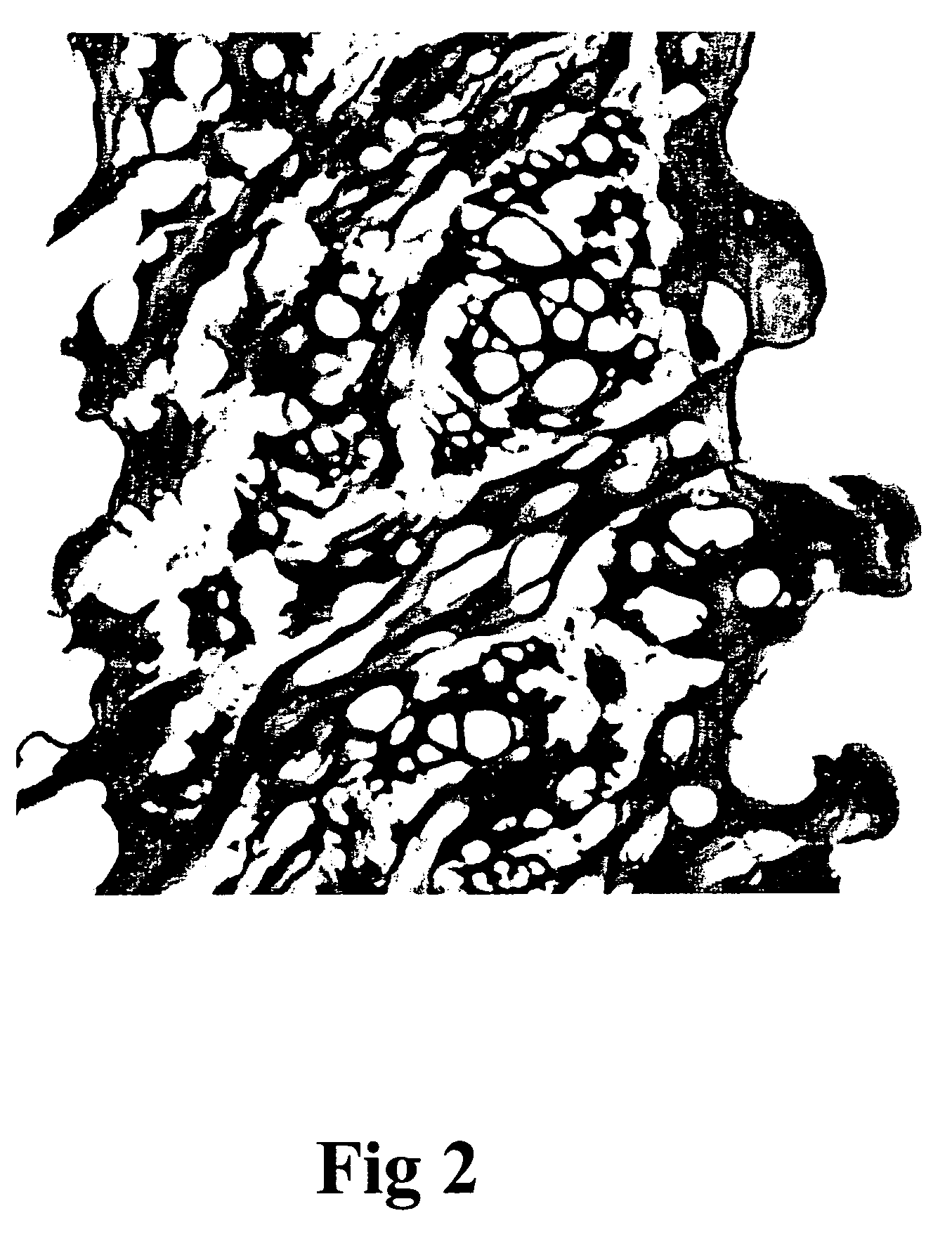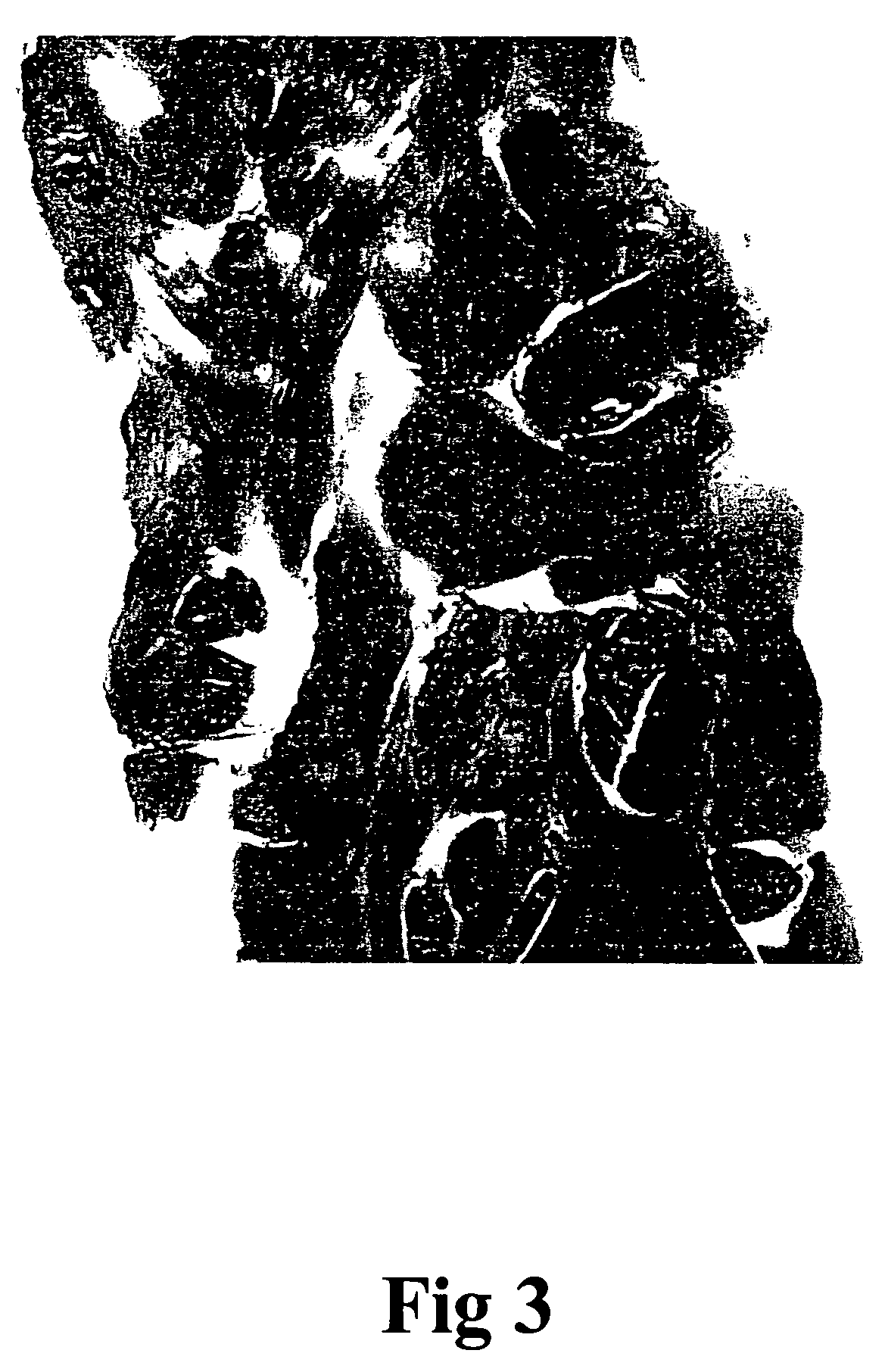Process for preparing porous collagen matrix from connective tissue
a collagen matrix and connective tissue technology, applied in the field of preparing porous collagen matrix from connective tissue, can solve the problems of poor porous homogeneity of matrix products obtained by any of these processes, lack of porous structure of matrix, and limited application of these processes, and achieve excellent qualities
- Summary
- Abstract
- Description
- Claims
- Application Information
AI Technical Summary
Benefits of technology
Problems solved by technology
Method used
Image
Examples
example
Example 1
[0048]Lipid and fat of pigskin were removed and washed twice. Epidermis of pigskin was removed with a dermatome, and dermal tissue with thickness of 0.2 mm was selected. The dermal tissue was washed with a phosphate buffered saline solution. Solution retained on the surface of the dermal tissue was removed.
[0049]The dermal tissue was then treated with a solution of 3% hydrogen peroxide on a rotator at 37° C. for 24 hours, and then washed with a phosphate buffered saline solution. A porous collagen matrix was obtained and the cross section of the matrix was evaluated and photographed under a light microscope as shown in FIG. 1.
example 2
[0050]The pig dermal tissue was pre-treated according to the process described in Example 1, and then treated with a solution of 3% hydrogen peroxide. The dermal tissue was then washed with an aseptic phosphate buffered saline solution and frozen at −20° C. with subsequent lyophilization. A porous collagen matrix was obtained and the cross section of the matrix was evaluated and photographed under a light microscope as shown in FIG. 2.
example 3
[0051]Lipid and fat of pigskin were removed and washed twice. Epidermis of pigskin was removed with a dermatome, and dermal tissue with thickness of 0.2 mm was selected. The dermal tissue was washed with a phosphate buffered saline solution containing 0.02% NaN3. Solution retained on the surface of the dermal tissue was removed.
[0052]The dermal tissue was then treated with a solution of 0.5N hydrochloric acid on a rotator at 37° C. for 3 hours. The treated dermal tissue was then washed with an aseptic phosphate buffered saline solution so as to remove residual chemical agents. A porous collagen matrix was obtained and the cross section of the matrix was evaluated and photographed under a light microscope as shown in FIG. 3.
PUM
| Property | Measurement | Unit |
|---|---|---|
| temperature | aaaaa | aaaaa |
| temperature | aaaaa | aaaaa |
| pH | aaaaa | aaaaa |
Abstract
Description
Claims
Application Information
 Login to View More
Login to View More - R&D
- Intellectual Property
- Life Sciences
- Materials
- Tech Scout
- Unparalleled Data Quality
- Higher Quality Content
- 60% Fewer Hallucinations
Browse by: Latest US Patents, China's latest patents, Technical Efficacy Thesaurus, Application Domain, Technology Topic, Popular Technical Reports.
© 2025 PatSnap. All rights reserved.Legal|Privacy policy|Modern Slavery Act Transparency Statement|Sitemap|About US| Contact US: help@patsnap.com



